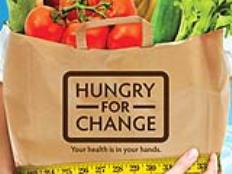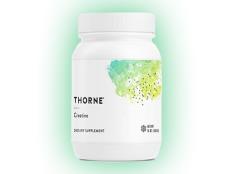
What foods belong in your fridge if you want to protect your heart and cut your risk of diabetes and cancer at the same time?
As long as you start with a healthy core diet-heavy on the fruits and vegetables and light on the bad fats, salt and sweets-it's up to you.
According to a landmark study called the OmniHeart Trial, you can round out your core diet with good fats, good protein or good carbs. Or you can switch from one to the other, depending on your mood.
"That gives people more options for lowering their risk of heart disease," says OmniHeart researcher Frank Sacks of the Harvard School of Public Health in Boston. "And if you want an extra edge," he adds, "you can replace some carbs with good protein or good fats."
The bottom line: "Diet can have powerful effects on blood pressure and LDL cholesterol," says Lawrence Appel of the Johns Hopkins School of Medicine in Baltimore, who led OmniHeart.
First came DASH, then OmniHeart. When researchers planned the first DASH (Dietary Approaches to Stop Hypertension) study, they only had money to pit one sort of diet against what Americans typically eat.
"We decided to test a higher-carb, lower-fat diet because vegetarians have that kind of diet and they have lower blood pressure," explains Frank Sacks of the Harvard School of Public Health.
"But we would have liked to also test a Mediterranean diet"-that is, one that's higher in unsaturated oils like olive, canola and safflower.
The first DASH study found that blood pressures dropped dramatically when its participants-all people with high blood pressure or prehypertension-switched from a typical American diet to meals that were high in fruits, vegetables and low-fat dairy foods, but with only modest portions of lean meat, poultry or seafood and few sweets.
"The reductions in blood pressure in people with hypertension were much greater than we expected," says Lawrence Appel of the Johns Hopkins School of Medicine.
The DASH study couldn't tell exactly what made the difference. "Fruits and vegetables probably accounted for about half of the impact on blood pressure," says Appel.
Was it the extra potassium or fiber or the calcium in the DASH diet that explained the rest of the drop? "The study wasn't designed to say," Appel explains.
Then came the DASH-Sodium study, which found that trimming sodium from the original DASH diet cut blood pressure even further."Many people have trouble changing to the DASH diet and reducing sodium," says Appel. "But it's worth trying to do both because your blood pressure will fall even if you only get part way with each."
Meanwhile, it became clear that both DASH diets cut not just blood pressure, but LDL ("bad") cholesterol, another major risk factor for heart attacks.
The DASH-Sodium was starting to look like one of the best all-around diets for the heart. But the question remained: when the DASH researchers cut saturated fat, did they replace it with the best foods?
That paved the way for OmniHeart.
OmniHeart started with three basic DASH-Sodium diets. All had roughly 10 daily servings of fruits and vegetables, two servings of low-fat dairy foods and four or five servings of grains (bread, pasta, rice, etc.).
All were fairly low in sodium (2,300 milligrams a day) and high in potassium (4,700 mg) and magnesium (500 mg). But other features differed.
For example, the higher-carb diet had more sweets, the higher-unsaturated-fat diet had more oils (canola, olive and safflower), and the higher-protein diet had more poultry, beans, tofu and nuts. After six weeks:
Blood pressure and LDL ("bad") Cholesterol dropped (that's good) on all three diets. But pressure dropped more with extra unsaturated fat or protein and LDL dropped more with extra protein.
Triglycerides dropped (that's also good) with extra unsaturated fat or protein, but not with extra carbs.
HDL ("good") Cholesterol dropped (that's bad) with extra carbs or protein, but not with extra unsaturated fat.
Then the researchers used blood pressure, cholesterol and other risk factors to calculate the participants' odds of having a heart attack in the next 10 years. Taking all the changes into account, says Sacks, "the higher-carb diet reduced the estimated risk of heart disease by 20 percent, while the higher-protein and higher unsaturated-fat diets both lowered risk by 30 percent."
- 1
- of
- 2







Discuss This Article